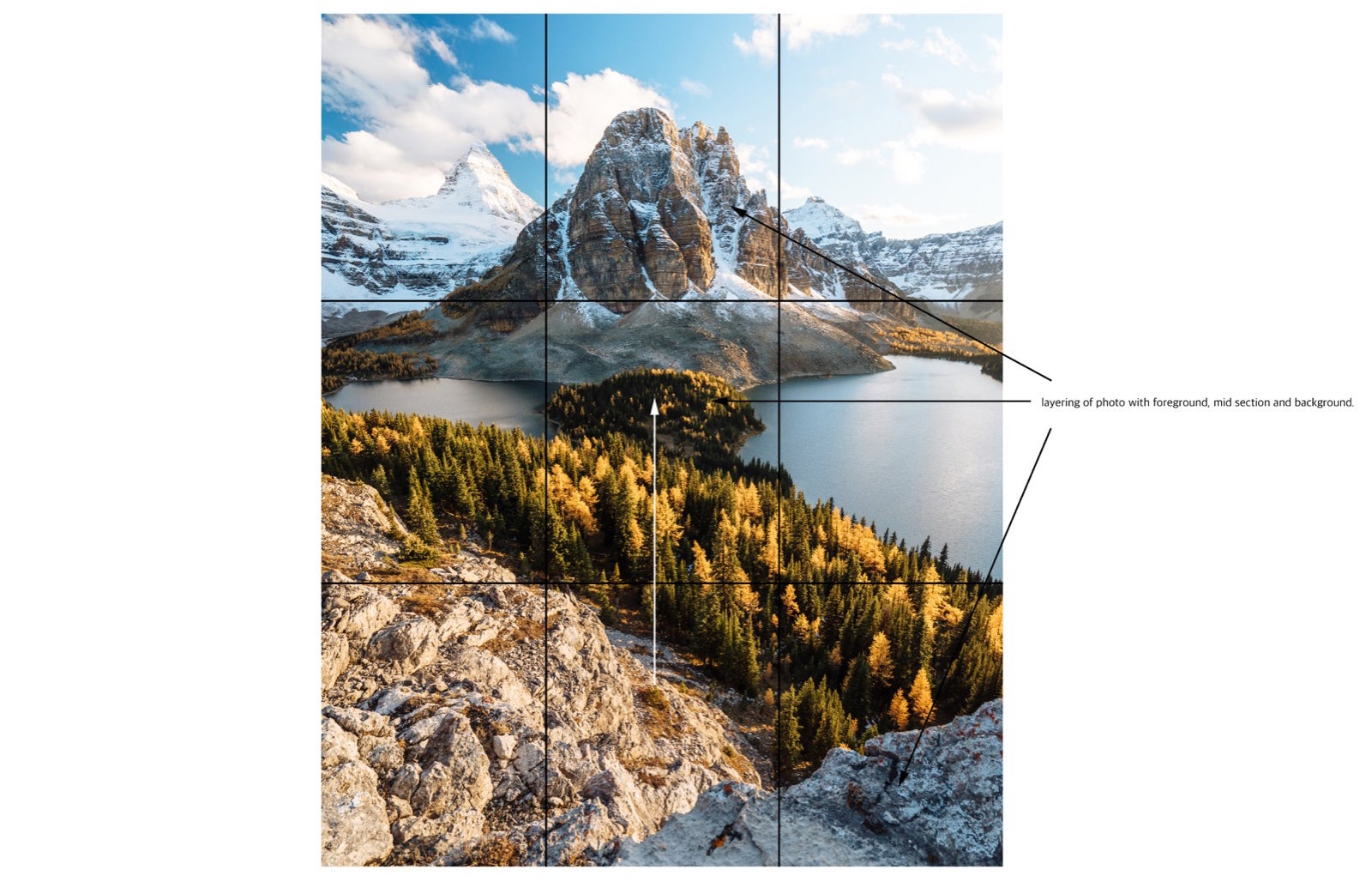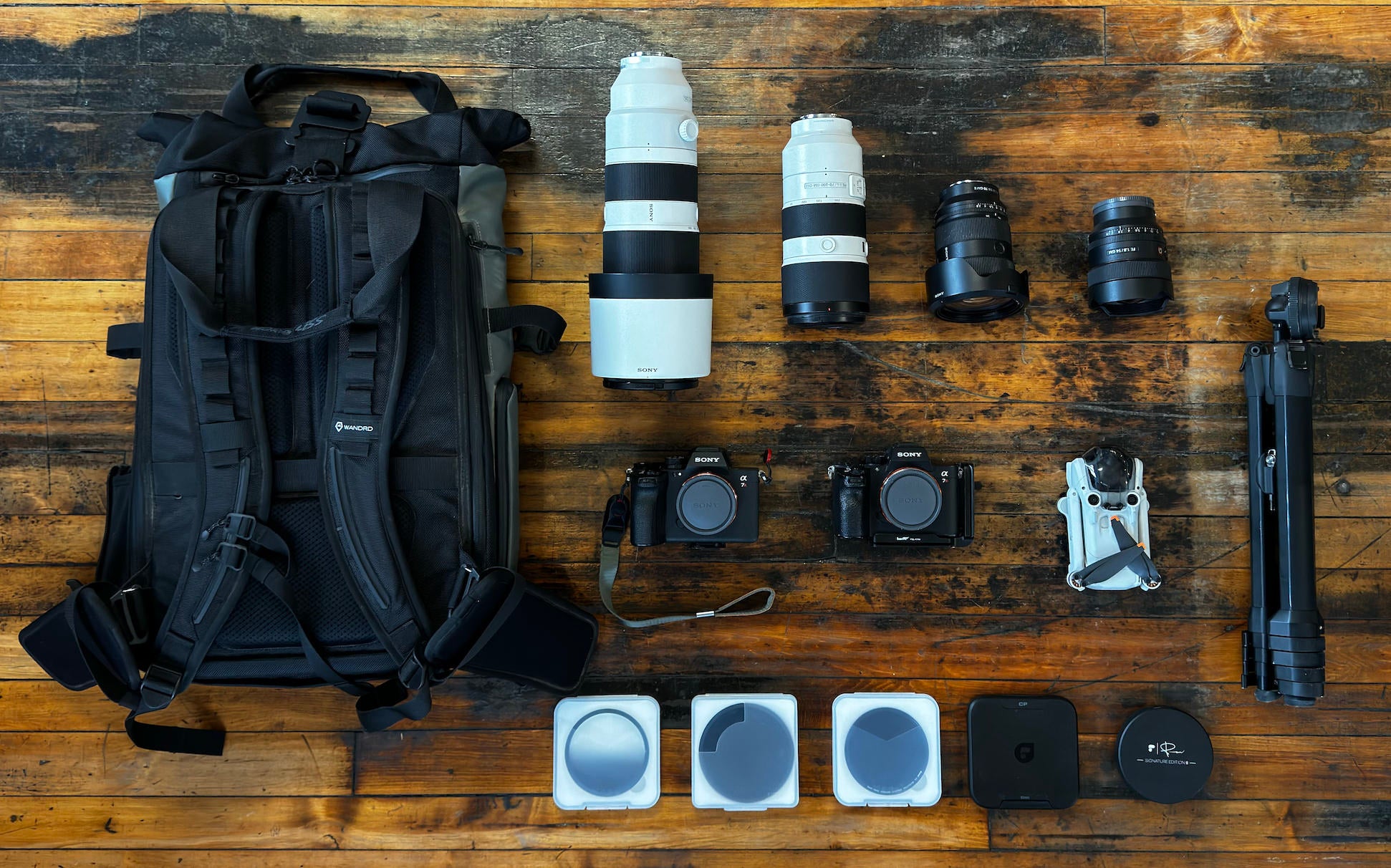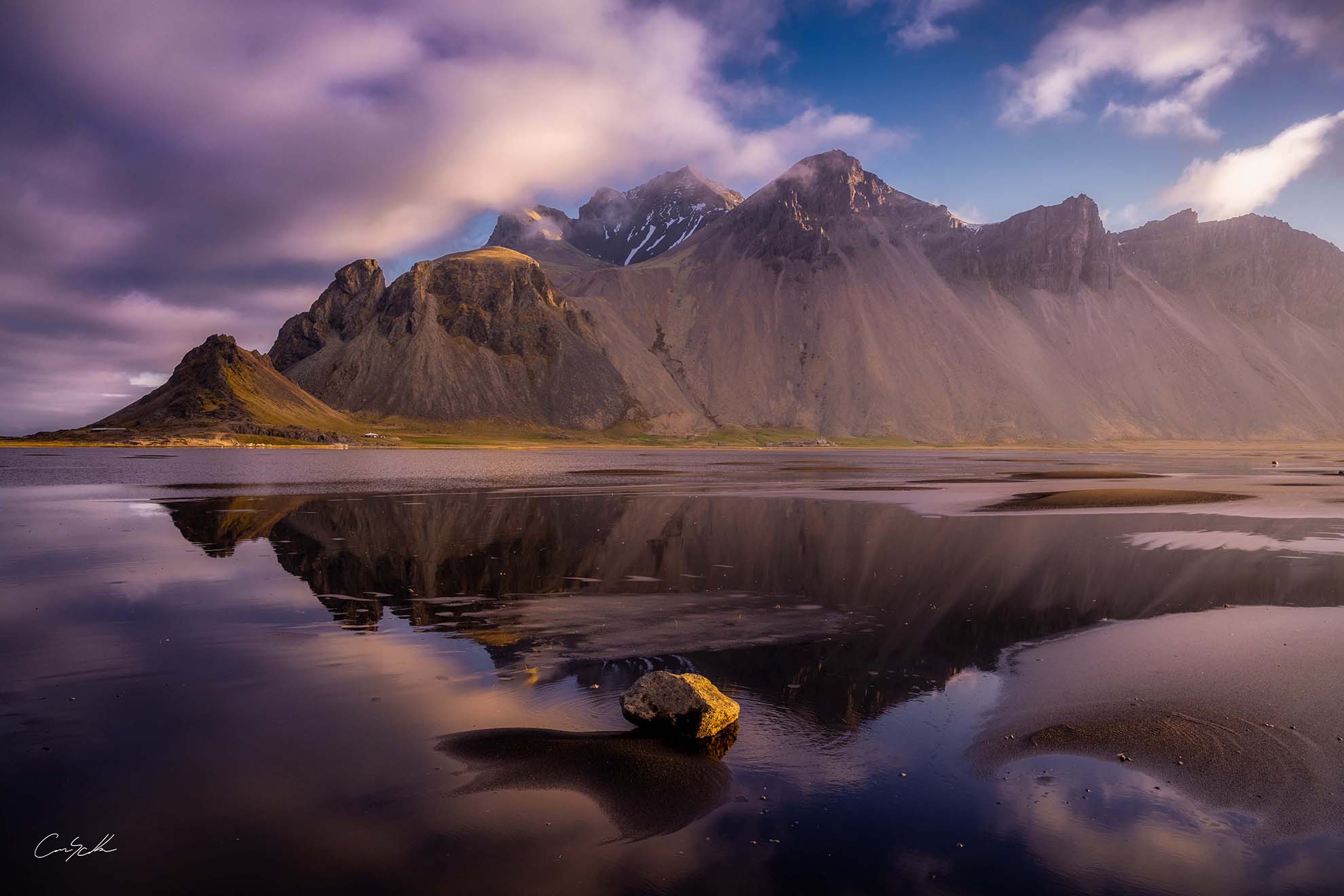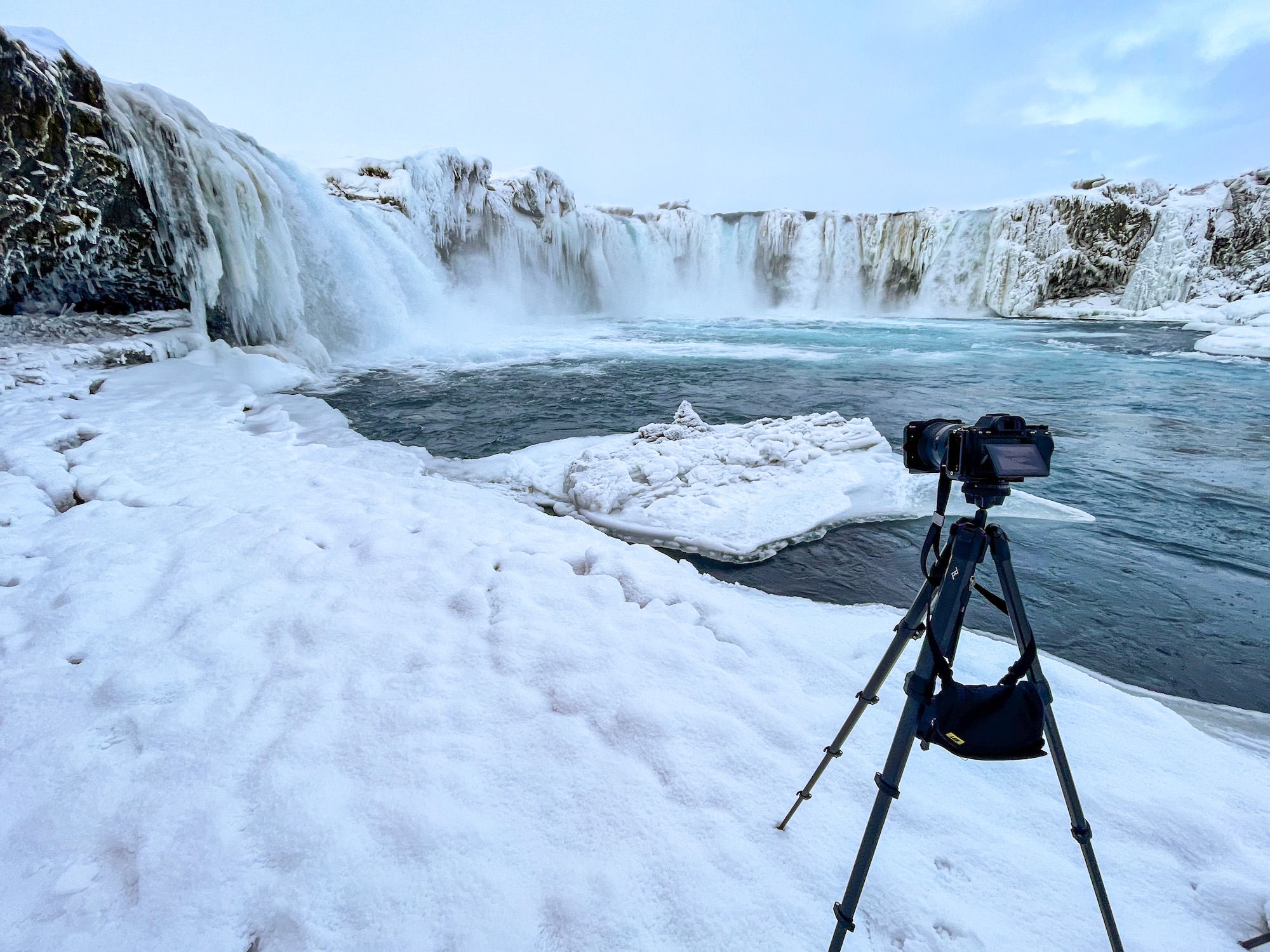Landscape photography is a great way to explore and share the world around us by capturing the beauty of our vast and varied environments. Whether you're shooting serene lakes at sunrise, sun-baked desert scenes, roaring rapids and waterfalls, misty forests or mountain sunsets, there are techniques and gear choices that can help get you started on the right path. Here we share five valuable tips for beginners to prepare you as you embark on your journey toward mastering landscape photography – let's dive in.
Just getting started in landscape photography? Follow these five essential tips to help get you going in the right direction.
Tip #1: Master The Art Of Composition
Understanding and applying composition rules is fundamental for creating compelling landscape photos. The rule of thirds, where you divide your image into nine equal squares and mark your points of interest along those lines or intersections, is a good starting point. Other techniques include leading lines, where you use natural lines to lead into the image, and framing, where you use surrounding elements to frame your focus point. These techniques will help guide your viewer's eye around the photo. In the images below, Sony Brand Ambassador and seasoned landscape photographer Stevin Tuchiwsky (@stevint) shares how he uses some of these composition rules to lead the viewer’s eye. As you progress, you can improve your composition with these Tips For Dynamic Landscape Compositions.

“You can see how I got low to the foreground to get into the image, and then the trees lead the eyes to Sunburst Peak.” – Stevin Tuchiwsky

“I use the ridge to lead your eyes away into the distance of the view.” – Stevin Tuchiwsky
Tip #2: Understand The Role Of Light
Nature's most breathtaking moments often happen during the "golden hours" – just after sunrise or before sunset. The soft, warm light during these times imparts an almost magical quality to landscapes. But don't discount shooting during other parts of the day. For instance, the harsh midday sun can create dramatic shadows for a unique take on familiar landscapes.
Sony Artisan Andy Katz has logged over 60,000 miles traveling to all our beautiful National Parks to create stunning landscape photography. He says that part of understanding the role of light for him is knowing that he can’t control it as he’s walking around - that’s where your creativity comes into learning how to work with it. He also says one of the most important things to do as you’re out shooting landscape photography is to remember to turn around to see what the light is doing behind you. He took the shot below in Redwood National Park after turning around to see fog appearing and the sun breaking through. Had he not turned around, he would have missed the entire thing.

Redwood National Park. Photo by Andy Katz. Sony Alpha 1. Sony 24-105mm f/4 G. 1/160-sec., f/13, ISO 200
Tip #3: Learn To Love Your Tripod
As a beginner we recommend that you learn to love your tripod. Sometimes you’re out and about without one, and handheld is the only option, which is fine. But a tripod provides stability to capture sharp, well-composed images, particularly in low-light conditions like dawn or dusk. It also makes it easier for you to adjust your composure and settings without having to hold your camera. For someone just starting out, it makes the landscape photography experience easier and more successful.
Not only that, using a tripod allows for longer exposure times and interval shooting. As you progress in landscape photography, you can experiment with these and capture things like dreamy water effects or stunning star trails. (If you want to get a headstart on these fun long exposure effects, check out Behind The Shot: Using Long Exposures To Create Surreal-Looking Landscapes and Behind The Shot: How This Creator Used Interval Shooting To Create A Stunning Star Trail Effect.)
Photo by Ewa Jermakowicz (@ewajermakowiczphotography) from Behind The Shot: Using Long Exposures To Create Surreal-Looking Landscapes
Tip #4: Invest In Quality Gear
The camera you have with you is always best of course, and as a beginner, you might want to work with what you’ve got before you fully invest. That being said, it is worth noting that in landscape photography, the reality is that the quality of your gear can significantly affect your final results. For those just starting out but looking for a Sony Alpha camera, we recommend something like the Sony Alpha 7 IV for a good balance of price, performance and features. Its full-frame image sensor combined with its excellent dynamic range allows for remarkable image quality, even in low light. Plus, the built-in image stabilization helps ensure sharp photos. It’s definitely one that will set you up for success in the post-production phase. You can see some of the incredible scope of images photographers have created with it on our Alpha 7 IV page. For maximum resolution, consider stepping up to the Sony Alpha 7R V which is a pro landscape shooter's dream camera. It's a 61-megapixel full-frame landscape still and video machine. See more about the Alpha 7R V on our Alpha 7R V page.
As a beginner, the wide variety of lenses to choose from can be overwhelming. If you want a quality combination, we recommend starting out by pairing the camera with a wide-angle lens like the Sony 16-35mm f/2.8 G Master II or Sony 24-70mm f/2.8 G Master II. These focal ranges allow you to capture landscape scenes from a variety of perspectives, they come with G Master performance and you won't outgrow them as you improve. If you want to travel light, think about a lens like the new 24-50mm f/2.8 G. It's a fast zoom that's easy to hike and travel with.

Photo by Bret Blakely (@bretblakely) from What’s In My Bag: From 14mm to 600mm, This Landscape, Astro & Wildlife Photo Kit Covers It All
If you’re more interested in a prime lens, you can get some great ideas in: The Best Prime Lenses For Landscape Photography. You can easily get other gear ideas from Sony shooters in our weekly What’s In My Bag articles. Check out our entire collection of them HERE and search for landscape photography to see what others choose to include in their kit – it might help you decide how to assemble your own.
Tip #5: Post-Processing Is Your Friend
Post-processing, done right, can take a good photo and make it great. Learn to use software like Adobe Lightroom or Photoshop to enhance the color, contrast and sharpness of your photos. But remember, less is often more when it comes to editing. Aim to naturally enhance your images rather than overpower them with effects. An over-saturated landscape image can really take away from its natural beauty. Aim to get your exposure right in-camera and then just use your editing techniques to enhance, not manipulate. YouTube is a great resource for editing tips using various applications and software, so time to start studying up.

Photo by Connor Scalbom (@connography_) from What’s In My Bag: A Lightweight Sony Kit For Travel & Landscape Photography
Embarking on your landscape photography journey can feel overwhelming at first, but don't let the wide world deter you. You may see a lot of landscape photographers posting on social media and think another one isn’t needed. That couldn’t be more false. Picture landscape photography instead as a vast canvas awaiting your unique approach. And remember, each photographer defines their artistic voice through practice, patience and the joy of discovery. Find more landscape photography content on Alpha Universe at alphauniverse.com/landscapes.
Want a bonus tip? Community is everything, so make sure you connect with and learn from other photographers! Join the Alpha Universe Community Forum to ask your questions, discuss ideas, collaborate and more.




